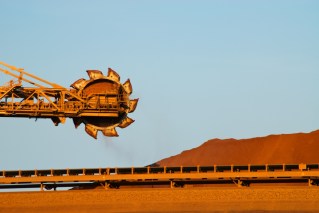Retail spending rose 0.4% in July to hit $23 billion
The latest official retail and trade figures have both come in around, or slightly better than, expectations.
The Australian dollar jumped about 0.2 of a cent briefly when the Bureau of Statistics data was released at 11:30am (AEST), but then settled back to 93.5 US cents.
Retail turnover rose a seasonally adjusted 0.4 per cent in July, following a 0.6 per cent rise in June.
Economist forecasts had centred on a 0.4 per cent rise, according to a survey by Reuters.
The two most populous states were among those leading the gains, with New South Wales sales up 0.7 per cent and Victoria up 0.6 per cent.
South Australia (0.4 per cent) and Queensland (0.1 per cent) had more modest gains, while the small ACT market saw sales surge 2.6 per cent during the middle of winter.
However, the Northern Territory saw sales slump 2.3 per cent, Tasmania had a 0.4 per cent decline and Western Australian sales eased 0.1 per cent.
Australians appeared to have the mid-winter munchies, with takeaway food sales surging 1.7 per cent, cafes and restaurants boosting revenue by 1.1 per cent, supermarkets posting a 0.5 per cent gain and liquor retailing up 0.9 per cent.
News was mixed for clothing and accessory retailers: footwear and accessories were popular, with sales up 2.8 per cent, but clothing sales fell 1 per cent.
Department stores, which straddle both those categories and several others, jumped 1.9 per cent, but the trend is still slightly negative.
Pharmaceutical and cosmetic sales were up, as were newspaper and book sales, but recreational goods turnover fell.
Also easing was the previously strong sales of furniture and electrical goods, although building and hardware continued its strong growth.
Fourth straight deficit, but trade imbalance narrows
While Australia recorded its fourth straight deficit in July, the imbalance narrowed by 13 per cent to $1.36 billion.
That result beat expectations of a deficit that would be roughly as bad as, and perhaps a little worse than, June’s $1.56 billion number.
The slightly improved result was driven by a 1 per cent increase in exports, while imports held steady.
An 8 per cent rise in meat exports helped boost the data, while metal ores and minerals were also up 4 per cent adding $249 million more in July than they did in June.
Tourism also added to exports, with foreign visitors spending an estimated 1 per cent ($20 million) more in Australia during July than they did in June.
Westpac senior economist Andrew Hanlan says the data shows that exports are likely to add to economic growth in the current quarter after subtracting from growth in yesterday’s second quarter GDP figures.
“We view the net exports subtraction from growth in the second quarter as a one-off in the current environment, reflecting payback for an outsized positive contribution in the first quarter,” he wrote in a note on the data.
“Resource export volumes are trending higher on expanding capacity, and service exports are increasing as well on rising global demand, while underlying import volume growth is subdued.”








